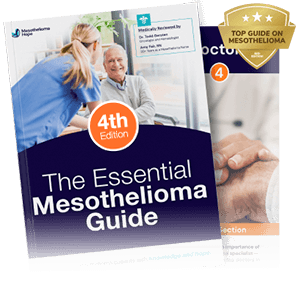Teachers and Asbestos Exposure
Before the 1980s, asbestos was seen as an ideal construction material, particularly for wall and ceiling insulation such as in schools. When the asbestos products were installed, they would have been stable. However, the material may now be dry and friable if it is still in place.
While asbestos is not dangerous when intact, once the friable particles get old they can break off and become airborne. This means it’s easy for nearby teachers to inhale or ingest the fibers, putting them at risk of asbestos diseases like mesothelioma.
An EPA survey from 1984 estimated that 15 million students and 1.4 million teachers and employees within 35,000 U.S. schools were exposed to airborne asbestos fibers. Sadly, many school districts have not yet taken the necessary precautions to abate asbestos contaminants from their properties.
Most asbestos was installed in schools between 1940 and 1980, meaning most buildings require renovation today.
The Occupational Safety and Health Administration (OSHA) regulates asbestos removal and requires that all public and private schools be inspected every 3 years. If asbestos is found in the air, the source must either be removed or sealed to avoid releasing the harmful fibers.
Teachers Roles and Responsibilities
Teachers are responsible for teaching students, of course, so it seems somewhat unlikely that they would come into contact with asbestos during their careers.
However, many teachers work in schools that are run-down or in need of repair, yet go above and beyond to keep their classrooms neat and tidy.
One teacher admitted to re-fitting ceiling tiles when they became loose to avoid the asbestos dust contaminating the classroom. This would have, hopefully, protected her students, but she could have put herself at risk of inhaling the fibers.
School teachers are also responsible for the decoration of their classrooms to a certain extent. All display boards and walls are generally adorned with drawings and resources and pinned in place by the teachers themselves.
Many cork boards in classrooms were also made using asbestos as a binding ingredient, placing teachers and students in close contact with dangerous fibers.
Teachers and Mesothelioma
Mesothelioma is a rare cancer that occurs when particles of asbestos are inhaled and become embedded in the lining of the lungs, heart, or abdomen. Over time, asbestos fibers trigger mutations in healthy cells, which form into tumors that spread to distant sites.
Mesothelioma is a difficult disease to control and it requires aggressive and comprehensive treatment plans.
Since 2001, 205 teachers in the UK have died from mesothelioma, though because this figure only includes those under the age of 75, the real number is estimated to be higher.
Compensation for Teachers
If you’re a teacher and believe that your mesothelioma diagnosis was due to occupational asbestos exposure throughout your teaching career, you may be eligible for compensation to cover medical expenses and a loss of income.
Our Justice Support Team can tell you more about receiving financial compensation and medical treatment. Get a free case review today.



